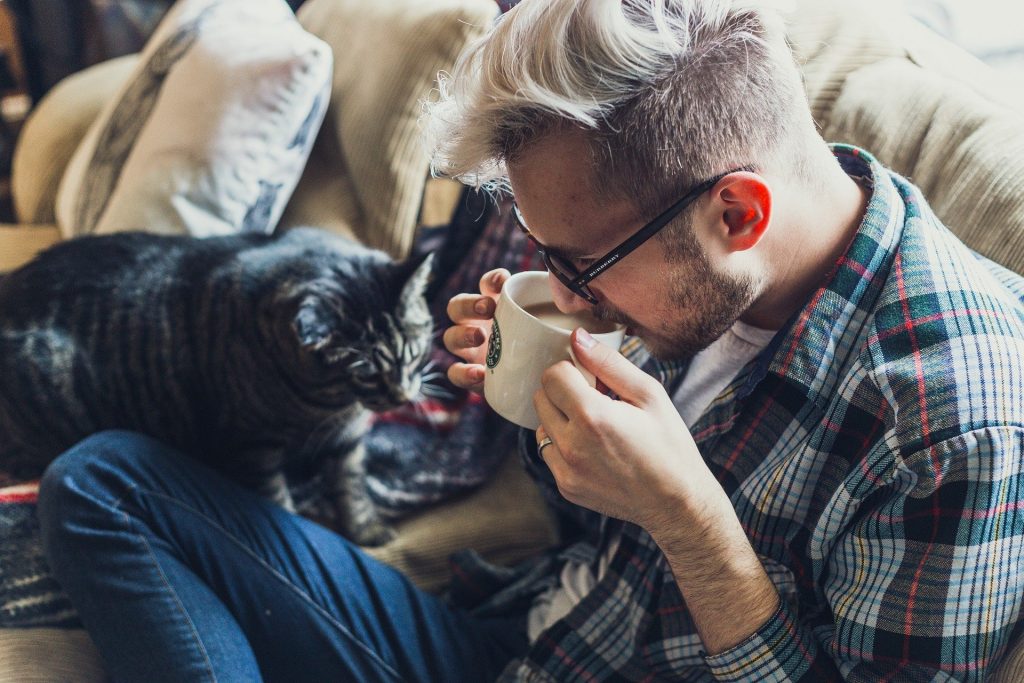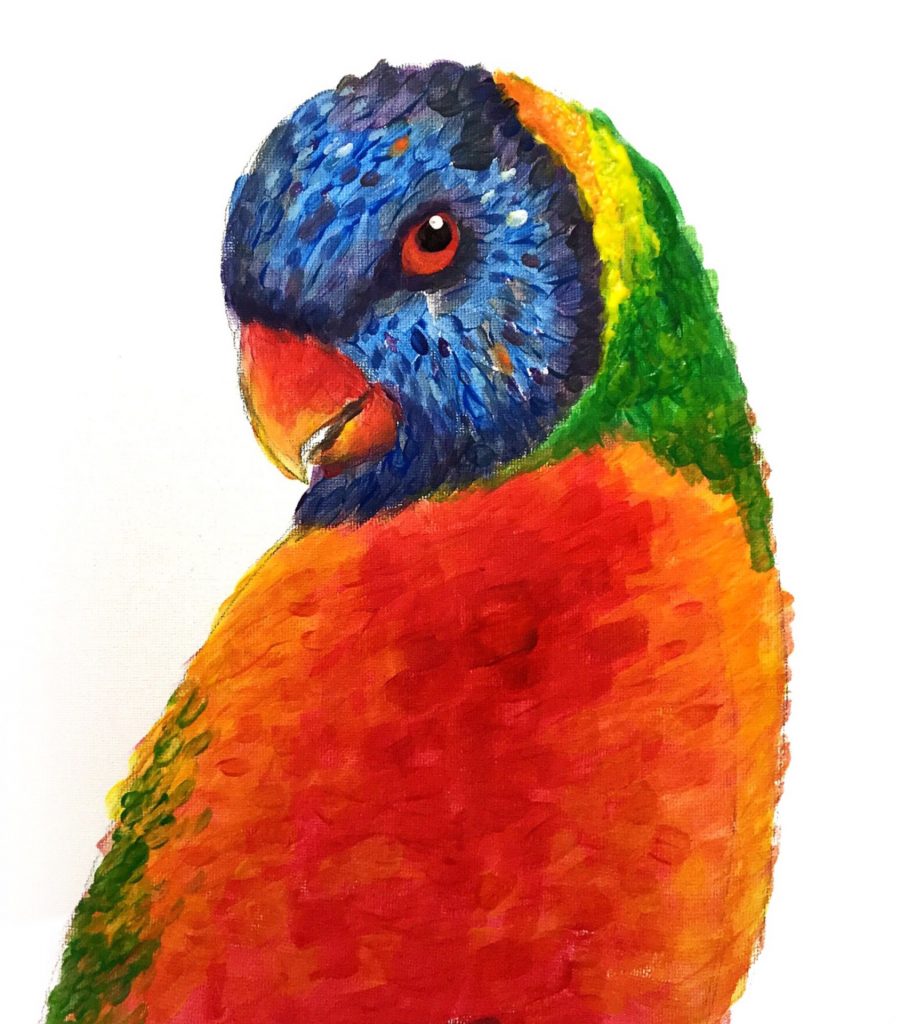Rule #1: Always Be Sincere
The golden rule of writing a pet eulogy is to be sincere. When it comes to saying goodbye and speaking about death, you can never make a mistake when you speak from your heart.
Pet eulogies do not include the family drama or politics of human eulogies—which is probably why we love pets so much. They’re the best parts of humanity in concentrate. Your pet was always sincere and honest with you, and you owe your pet that in return when honoring their journey and influence on your life.

“Sincerity is moral truth.” – Henry Lewes
Rule #2: Listen To The Voice In Your Head
For many people, writing is a challenge. But if you can vocally say your thoughts and feelings in words, you can write them in words, too. When struggling to identify the best words to write, simply say what you want to communicate and scribble down those words.
Appreciate that writing is also the process of revising. Expect the first few drafts of your pet eulogy or pet obituary to feel, often in an indescribable way, inadequate. Relax. That is normal. Give your mind at least one night of sleep — that, after all, is when our brains make sense of the world — to process, analyze, and contextualize what needs to be said in your pet tribute. It’ll come to you over time, often overnight.
Rule #3: Remember How You Felt
The poet and writer Maya Angelou once stated, “I’ve learned that people will forget what you said, people will forget what you did, but people will never forget how you made them feel.” That’s what we love the most about our pets — is how they make us feel. So when honoring the life of a deceased pet, remembering how they made you feel is the best place to start with your words. Let the story take you from there.
[Check out the Top Five Pet Loss Books For Children]
Rule #4: Be Patient With Your Grief & The Process
Take your time. Breathe. Think.
Recall the details from the first day you met your pet. Think about what connected you and your personality to the sensibilities and nuances of this particular animal. Spend some time in silence to explore your pet’s unique quirks and the special moments that made you laugh, worry — and feel less lonely, depressed, or disenfranchised.
Revisit the times when your pet surprised you or got into trouble for tearing up the toilet paper, hiding a shoe in the backyard, or for peeing somewhere it wasn’t supposed to pee. Remember how you played together, ate together, went on trips together, stayed home together, and enjoyed each other’s company simply by being near each other.
If you need an example of what to do, watch this heartfelt pet eulogy — in the form of a poem — that Jimmy Stewart wrote about his beloved dog, Beau.
Rule #5: Be Appreciative, Reflective, & Grateful
A rambunctious golden retriever puppy. A friendly Syrian hamster. A silky Crowntail Betta. We appreciate and develop unique relationships with our cherished pets. Our animals have a singular way of impacting our lives, our well-being, and our view of the universe.
When a pet dies, we lose that key pet support system. We lose that sense of connection. We lose that living entity that helped shape our daily lives. It’s heartbreaking. It’s tragic. But it’s an event that, given sufficient time, is given further meaning by profound reflection. Our sense of emptiness becomes a pathway to gratitude.
The ritual of a pet eulogy honors, celebrates, and forever connects our souls with our pets that have passed on — not by creating closure, but by creating stories. Pet eulogies give temporary relationships the eternity of words. Writing a pet eulogy should be a natural process that does not remove our grief, but embraces it in a way that brings the cycle of life to the forefront of our thoughts and feelings in an act that expresses the most powerful and healthy of human expressions: gratitude.
If you are struggling with how to express gratitude when writing your pet eulogy, you may want to consider these other ways to honor your pet…
Pet Videos As Eulogies & Tributes
Old videos are excellent ways to share memories of our pets. Videos capture the personalities of pets and owners — and the unique relationships between pets and people. Videos often reveal the dynamic and subtle idiosyncrasies of the relationships between pets and their families. Also, videos are the perfect way to communicate feelings that pet owners can find difficult to express in written words.
Posting videos of your pet shows others exactly what your pet looked, sounded, and felt like to be around. Every time you hear a pet owner speak, laugh or interact with their pet on video, you immediately understand that the communication between animals and people may be different, but no less powerful, emotional, and life-affirming.
Watch this video, for example:
[More pet loss advice, insights, and resources: Life After Loss: 5 Signs It’s Time for a New Pet, Pet Loss Condolences: What to Say and How to Say It, and 8 Books on Pet Loss and Grief.]
Pictures & Images Capture Pet Relationships
We all take pictures of our pets. Many even have their own social media accounts. Whether it’s your peaceful tabby cat curled up around your face in bed, your toothy dog stretched out in midair to catch a frisbee or your colorful parakeet perched atop its cage — photo images of pets capture important moments in our relationships with our animals.
When writing a pet eulogy, it may be difficult to navigate your grief as you scroll through the pictures of your many memories together. But, while recognizing your sadness and grief, know that in time there is love, joy, and meaning in the pictures you have taken with your pet. These emotions and memories are part of your pet’s legacy. You take pictures to record valuable moments. Sharing those moments in your pet eulogy is a powerful way to celebrate and honor your pet’s life.

Pet Artwork & Creative Tributes
Pet owners, being sensitive people who deeply feel a connection with animals, also tend to be artful souls. Artwork of pets immortalizes the individual character traits of our animals. The beauty of pet artwork and creative pet tributes is that they come in a variety of mediums and expressions.
Pet portraits, paintings, collages, drawings, crochet, paw prints, t-shirts, and other forms of expression — from the real and meticulous to the surreal and impressionistic — are thoughtful ways to celebrate the lives of our pets. Art also affords the creative latitude often needed to highlight the uniqueness of our pets. As with humans, the spirit of an animal can be difficult to depict through real-life videos and images.

Art allows us to emphasize the overlooked aspects of our pets — from the loyalty of dog when we’re in danger, to the compassion of a cat when we are immobilized by sickness in our beds, to the celebratory joy of a bird singing when we walk through the front door after a difficult day at work.
Pets, like people, can be irreverent, precocious, kind, stubborn, rebellious, caring, creative, humble, prideful, introverted, troublemakers, peacemakers, lonely, outgoing, poetic, loud, shy, fighters, lovers, gregarious, hilarious, jealous, serious, weird, normal, odd, boring — and everything beyond, within, and in between all of those characteristics and feelings we typically associate with the human condition.
Art captures it all. Pet personalities are complicated and complex, but also simple and straightforward. Pets have been featured in art since we lived in caves and built pyramids, because art is about telling stories. And those pet stories are also the stories of us. Human beings.
Remember:
Grief is like falling down a flight of stairs — no two people do it the same way. Whenever we lose a family member, our families change forever. This is especially true when we lose a beloved pet because animals fill voids in our lives that people simply are not able to inhabit.
Your dog, cat, guinea pig, bird, or other pet understands you like no one else, because — as human beings — we’re different when we are around the animals we have chosen to love and share our lives with. Our pets make us better human beings. And losing a pet is like losing part of our own humanity.
